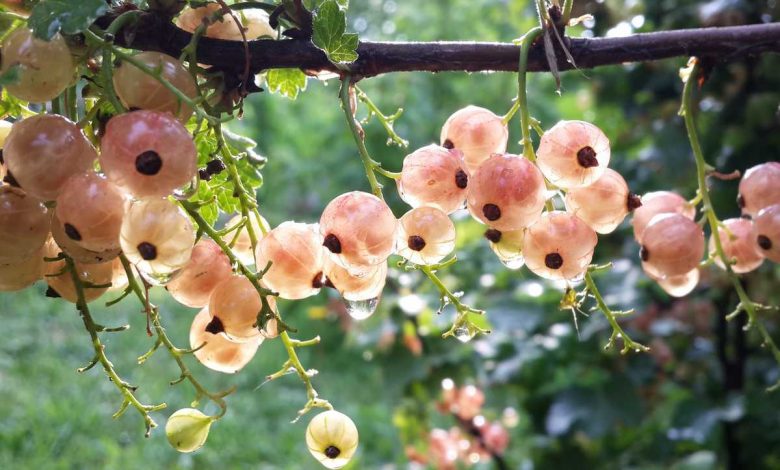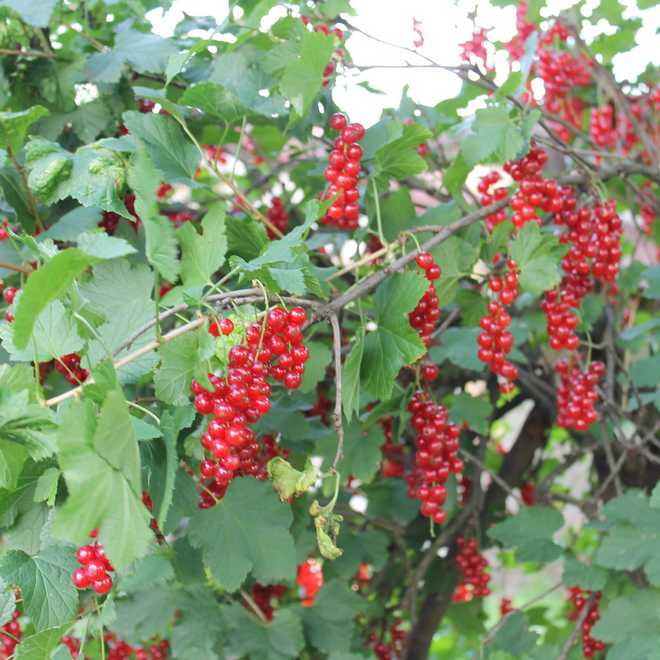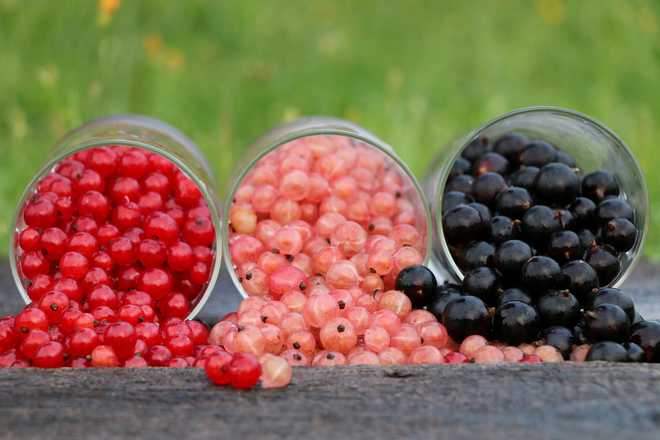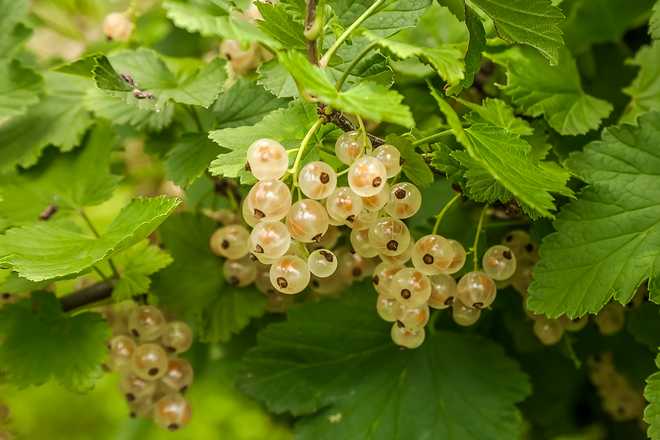
The ripening in June of red currants gives an opportunity to take an interest in the best varieties. From bright red to creamy white, there is a wide variety of colors and aromas.
Red currant bushes
The redcurrant (Ribes rubrum) is the one that gives red , pink or white currants. It would have been introduced in France in the Middle Ages.
Fertile de Palluau, the best variety
This vigorous currant offers moderately long bunches. Its small berries are attached with very few stems, which makes harvesting tricky. But this defect is largely compensated by other qualities: its beautiful dark red color, its thin skin, and its fleshy pulp, without too much water, and especially without bothersome pips.
The taste is perfectly balanced between sweet and sour flavors, with a slight hint of bitterness. Rich in vitamins , Fertile de Palluau is also quite simply one of the most fragrant currants. Versatile, it is excellent in jellies, pies, coulis, wine or even syrup.
Mulka, a late currant
This late variety is harvested between July and mid-August, very ripe. Its flavors are then even more fruity. Mulka offers long, tight currant clusters of a beautiful, very dark red color. Juicy, the pulp is acid and very sweet, with a small seed. The classic gooseberry flavors are complemented by interesting blackcurrant notes.
Maturation period: from mid or end of July
Junifer, an early variety
Junifer offers its large bright red fruits from the beginning of June. This variety is ideal in regions with mild winters. It bears fruit on one-year-old wood, offering clusters 10 to 15 cm long carrying many large to very large grains, containing a small seed.
The sweet and tart flavors are well balanced, with a slight hint of bitterness. It is one of the best varieties to find a real taste of garden gooseberry. A small red fruit to be used in wine, syrup, jelly or jam.
Maturity period: Early June

Red lake, long-cluster
This variety produces a very long, fairly loose cluster. The large grains, sometimes even very large, have a transparent skin and a beautiful red color.
The juicy pulp contains a large seed, but is very sweet with pleasant and light red fruit notes.
Maturity period: Early July
London Market, a productive heirloom
It is the most classic variety, available in all garden centres. London Market produces long, well-stocked bunches of large to medium-sized currants, but of a pretty bright orange-red color.
The grain inside the fruit is small, the flavors well balanced in acidity and sugar.
Its only small defect: the redcurrant-blackcurrant aroma is a little too discreet and above all, it tends to disappear during cooking in favor of the acidulous notes.
Maturity period: Early to mid-July
Laxton’s perfection
Laxton’s Perfection produces loose, medium-long clusters of large , bright red currants . Their pulp is juicy, with a seed that is unfortunately a bit too big.
The very sweet taste is slightly acidic, but with a hint of bitterness.
The gooseberry aromas are unfortunately too discreet and tend to disappear during cooking.
Maturity period: Early July
Fertodi, with long bunches
Of Hungarian origin, this old variety produces a very long bunch (15 cm). The berries are attached by a long stem which makes harvesting easy. Small to medium in size, the red berries have orange reflections. The seed is small but the pulp is a bit soft. On the taste side, this gooseberry is not very sweet, not very acid and not very bitter. Its discreet aromas evoke those of the heart of pigeon cherry.
Maturity period: Early to mid-July

Rosetta, productive but not very tasty
Its medium-long cluster bears large , light red berries with a slightly thick skin and also a slightly large seed. It is a tart currant, not bitter, which offers fresh but very discreet aromas.
Maturity period: Early July
Maarse’ prominent
This variety gives small bunches, with medium-sized ruby red berries. The juicy pulp releases light aromas with lemony notes.
Maturity period: Early to mid-July
Rovada, late and productive
Of Dutch origin, this variety of currant-grape is resistant to diseases and very productive. It offers long , very dense bunches, with berries that are easy to pick. The grains are large to very large, of a superb bright red color but their skin is thick and the seed quite large. The balance is good between acid and sweet flavors but the tasting lacks aromas in the mouth.
Maturity period: End of July
Jonkheer van Tets, too classic
This variety produces long clusters of small, shiny bright red berries . Its pulp is a little soft, but without annoying seeds. Unfortunately, its taste is more acidic and harsh than sweet. The aromas are also very discreet.
Maturity period: Early July
Currants with white or pink clusters
Gloire des Sablons, the most beautiful currant
This classic and well-known variety first appeals for the beauty of its clusters, of medium length. It produces large currants whose translucent skin reveals a coral pink pulp veined with white.
The skin is thin, the pulp soft and juicy, the seed small. Its sweet taste is acid enough to give pep. Its aromas are somewhat reminiscent of those of bigarreau cherries.
Gloire des sablons is the perfect variety for a flavored jelly with an elegant candy pink color.
Maturity period: At the beginning of July

White Versaillaise, a very fragrant currant
Easy to harvest, this variety gives medium-sized white fruits. In reality, their yellow-green color is slightly pinkish. The skin is translucent and veined with creamy white, the seed does not bother. Well balanced, the taste is moderately acidic, with a little bitterness, but it remains very sweet. To the aromas of classic gooseberries are added a slight aftertaste of iron and cassis.
Maturity period: At the beginning of July
Margaritar, a late white currant
This variety of white currant offers a long , well-stocked cluster . The medium to large berries take on a golden yellow-green color when ripe. Their taste, well balanced between sweet and acid, gives off powerful but pleasant aromas of green apple. They stay in the mouth for a long time.
Maturation period: Until mid-August
